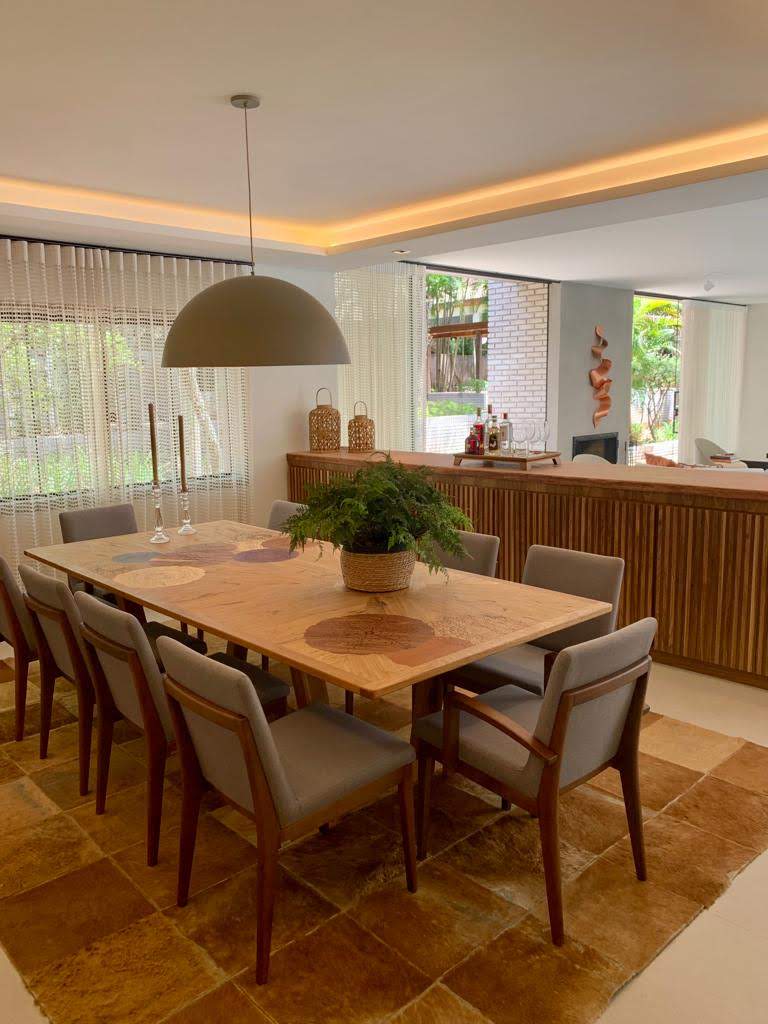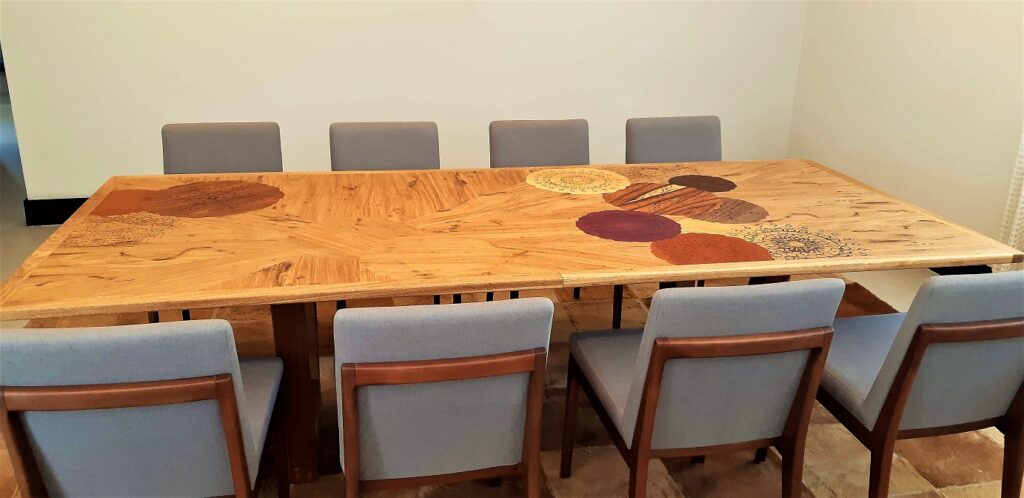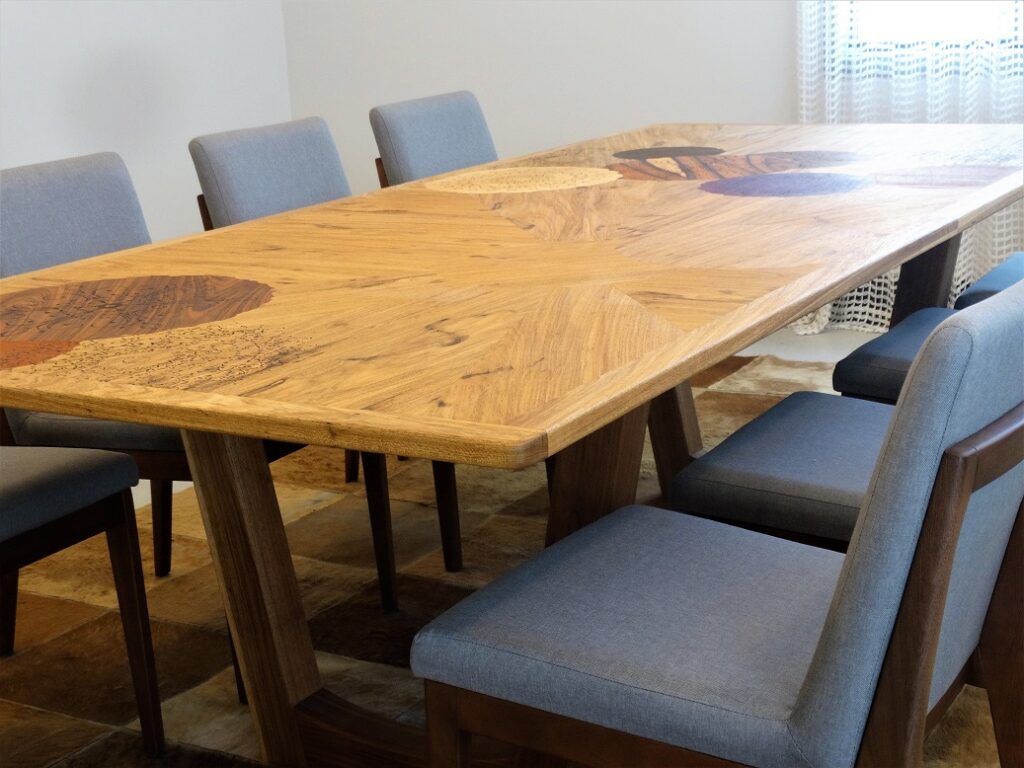click on the image to see it in full
On the top, the incredible beauty of our freijó wood and the marquetry work with different woods.
MANDALA, which in Sanskrit means “circle”, is a representation of the dynamic relationship between man and the cosmos, through concentric geometric shapes and subdivisions, more or less regular.
For many, MANDALA is just a decorative object, but it means much more than that.
It is present in Hinduism, Buddhism and Taoism.
In Catholic churches, between the 16th and 18th centuries, it was used to decorate walls and stained glass windows.
The emergence of the first MANDALAS came from the eighth century in India. Soon after, they were also seen in China and Japan.
In Tibet, this type of painting is widely used, mainly by Buddhist monks to help with concentration and meditation.
It is referred to by the expression “Khyil-Khor”: center of the Universe, in which the Divine and Enlightened Being resides.
WOOD MANDALAS are also a tradition of Buddhism, representing the abode of some sacred deity.
For this reason, they are often used as gifts for people.
approximate measurements (2.7 m long x 1.2 m wide)







